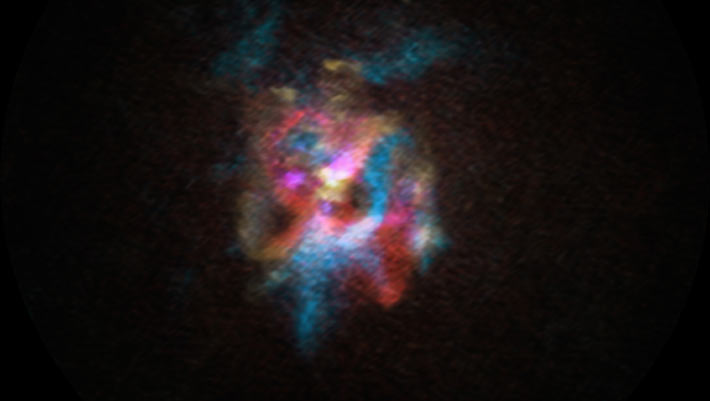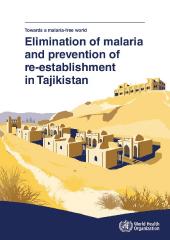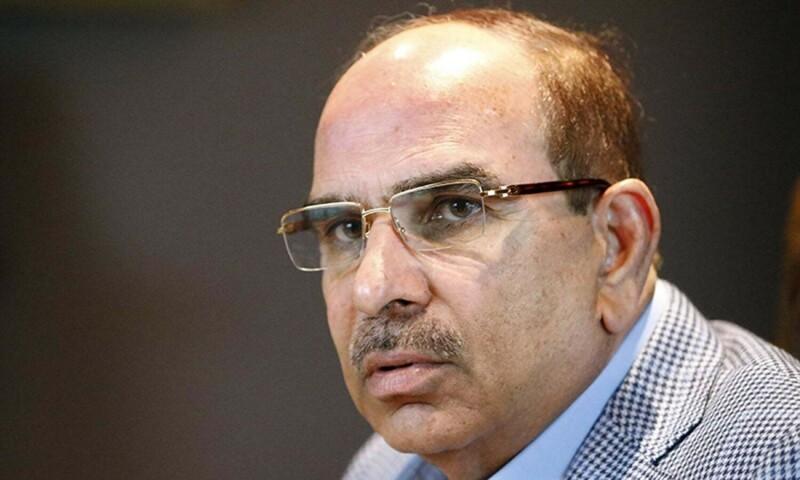- Pakistan urges UN to implement resolutions on Kashmir RADIO PAKISTAN
- Youm-i-Istehsal: PM notes India’s occupation of Kashmir ‘defining conflict’ in South Asia Dawn
- Kashmiris’ right to self-determination cannot be denied: Rana Mashhood ptv.com.pk
- DPM Dar urges India to grant Kashmiris right to self-determination The Express Tribune
- Kashmir Siege Day to be observed tomorrow nation.com.pk
Blog
-
Pakistan urges UN to implement resolutions on Kashmir – RADIO PAKISTAN
-

Astronomers Discover Exotic Red Supergiant Star
Designated Stephenson 2 DFK 52, the newly-discovered red supergiant resides in the massive stellar cluster RSGC2.
This image shows the red supergiant star Stephenson 2 DFK 52 and its circumstellar environment. Image credit: ALMA / ESO / NAOJ / NRAO / Siebert et al.
RSGC2 is a cluster of at least 26 red supergiants located at the base of Milky Way’s Scutum-Crux spiral arm at a distance of 5,800 parsecs (18,917 light-years).
Also known as Stephenson 2, the cluster is a site of recent star-forming activity in the region where the arm intersects the Galactic bulge.
Chalmers University of Technology astronomers Mark Siebert and colleagues observed the RSGC2 stars with the Atacama Large Millimeter/submillimeter Array (ALMA).
“What we’re seeing in this photo of Stephenson 2 DFK 52 is actually a red supergiant star expelling a cloud of gas and dust as it nears the end of its life,” they said.
“These nebulae are common around supergiant stars; however, this particular cloud presents an unexpected and considerable mystery for astronomers.”
“This is the largest cloud of ejected material to have been found around a supergiant star, at an enormous 1.4 light-years across.”
“Stephenson 2 DFK 52 is rather similar to Betelgeuse, another famous red supergiant, so they were expecting to see a similar cloud around it.”
“However, if Stephenson 2 DFK 52 was as close to us as Betelgeuse is, the cocoon around it would be as wide in the sky as a third of a full Moon.”
The new ALMA observations allow the astronomers to measure how much material surrounds the star and how fast it is moving.
“The parts that are moving towards us are highlighted in blue, and the sections that are moving away, in red,” they said.
“The data show that about 4,000 years ago the star went through an episode of extreme mass shedding, and then slowed down to its current rate, more similar to that of Betelgeuse.”
According to the team, Stephenson 2 DFK 52 has a mass of between 10 and 15 solar masses, and by now it has already lost 5-10% of its mass.
“It’s still a mystery as to how the star managed to expel so much material in such a short timeframe,” the researchers said.
“Could it be an odd interaction with a companion star? Why is the shape of the cloud so unusually complex? Are there more supergiants like this out there?”
“Deciphering why Stephenson 2 DFK 52 has already shed so much material will help astronomers understand how it will meet its end: a supernova explosion sometime in the next million years.”
The team’s paper will be published in the journal Astronomy & Astrophysics.
_____
Mark A. Siebert et al. 2025. Stephenson 2 DFK 52: Discovery of an exotic red supergiant in the massive stellar cluster RSGC2. A&A, in press; arXiv: 2507.11609
Continue Reading
-

Researchers discover amyloid protein buildup in bone marrow of aging mice
A recent study led by a team of researchers at The Johns Hopkins University School of Medicine examining aging mice has provided what is believed to be the first evidence that amyloid beta protein-small, sticky protein fragment found in people with Alzheimer’s disease (AD)-particles build up in the bone marrow of the animals, although not in the exact same form as the large, dense plaques found in the brains of people with Alzheimer’s disease.
“Although amyloid buildup has been found in organs outside the brain-such as the heart, kidneys, and nerves-it remains unclear whether similar deposits form in bone or bone marrow with aging or in Alzheimer’s disease,” says contributing study author Mei Wan, Ph.D., professor of the department of Orthopaedic Surgery. While brain amyloid has been extensively studied for its role in memory loss and neurodegeneration, far less is known about amyloid elsewhere in the body. In fact, almost nothing is known about whether amyloid forms in the skeleton or how it might contribute to age-related bone loss.”
AD is primarily associated with excessive amyloid plaques in the brain. Osteoporosis is a bone disease marked by low bone mineral density with an increased risk of fractures. Recent research suggests these two age-related conditions may be connected, and scientists are beginning to uncover common underlying causes.
Funded by the National Institutes of Health, the study findings, published in the July 29th edition of Nature Aging, advance scientific understanding of long-suspected similar biological processes that may be at work in osteoporosis – a form of bone loss – and Alzheimer’s dementia, the researchers say. The work may also offer potential new targets for preventing or treating bone loss.
The buildup of amyloid is triggered by fat cells in the bone marrow, known as bone marrow adipocytes (BMAds), and a protein they release called SAP/PTX2 in aged mice and mice with AD. These amyloid deposits impair bone-building cells (osteoblasts) and activate bone-resorbing cells (osteoclasts), leading to bone loss. In previous mouse models, removing senescent BMAds or blocking SAP/PTX2 have shown to significantly reduce amyloid buildup and restored bone health.
In this study, male and female mice ranging from 4 to 24 months were kept in a temperature-controlled room provided with ongoing access to food and water and exposed to a 12-hour light-dark cycle. Researchers put a concentration of 5mg/ml in the drinking water of the mice aged 18 months and examined the effects CPHPC had on their age-related bone loss. CPHPC (also named Miridesap) is a small molecule compound originally designed to treat amyloidosis which is a rare disease marked by the buildup of amyloid proteins. A control group of mice aged 4, 9, 22 and 24 months were given the same dosage of water without the CPHPC drug
High-resolution imaging of thigh and shin bones revealed amyloid fibrils forming ring-like structures around BMAds in aged mice and mice genetically engineered to have a form of AD. SAP/PTX2-driven amyloid clumps were found to enhance bone loss.
Study results also showed that CPHPC successfully depleted SAP/PTX2 and reversed bone deterioration in the older mice, suggesting a promising new therapeutic strategy for osteoporosis in the elderly, a strategy that would seek to eliminate aging fat cells or amyloid-promoting proteins.
Our study is what we believe to be the first to show that harmful amyloid fibers (Aβ fibrils) build up in the bone marrow of aged mice. We also found that fat cells in the bone marrow release a protein called SAP/PTX2, which plays a major role in triggering this amyloid buildup and damaging bone. These findings uncover a new connection between bone loss and dementia risk and may open the door to new research on how protecting bone health could also help protect brain function.”
Mei Wan, Ph.D., Professor, Department of Orthopaedic Surgery, Johns Hopkins Medicine
This discovery provides an opportunity for new treatments targeting bone aging and Alzheimer’s-associated osteoporosis by focusing on the elimination of senescent fat cells or amyloid-promoting proteins.
Funding was provided by the National Institutes of Health grant R01AG068226 and R01AG072090.
In addition to Mei Wan, contributing authors included Surendra Kumar, Kangping Song, Jiekang Wang, Meghraj Singh Baghel, Yixiang Zeng, Ke Shen, Junying Zheng, Janet Crane, Shadpour Demehri, Peisong Gao, Amit Jain, Richard L. Skolasky, Philip Wong, and Xu Cao.
Journal
Nature Aging
Source: Johns Hopkins Medicine
Source: Johns Hopkins Medicine
Source:
Journal reference:
Kumar, S., et al. (2025) Serum amyloid P secreted by bone marrow adipocytes drives skeletal amyloidosis. Nature Aging. doi.org/10.1038/s43587-025-00924-z.
Continue Reading
-

elimination of malaria and prevention of re-establishment in Tajikistan
Overview
This publication presents the history of malaria in Tajikistan. It focuses on evaluating the policies and strategies applied to contain malaria epidemics in the 1990s and early 2000s after the re-establishment of local transmission, to eliminate malaria and subsequently to maintain the country’s malaria-free status. Tajikistan achieved malaria elimination through the coordinated efforts of the health system, other sectors, and the entire population. This was made possible by well-designed, meticulously organized interventions and sustained financial investments over an extended period.
After being certified malaria-free by WHO in 2023, Tajikistan maintained a well-organized surveillance system and effective preventive activities, which are crucial for preventing malaria resurgence.
The main objective of this publication is to document the expertise accumulated in Tajikistan on achieving malaria elimination and maintaining malaria-free status. Lessons are distilled for countries that are working toward elimination or seeking to prevent the re-establishment of malaria.
Continue Reading
-

USDA using argument scene from “Marriage Story” to horrify wolves
The U.S. Department of Agriculture is using the audio from an argument scene between Scarlett Johansson and Adam Driver from Noah Baumbach’s 2019 film “Marriage Story” to scare wolves away from cattle.
After the wild animals killed 11 cows during a 20-day period in Oregon, the USDA started deploying quadcopters that used thermal cameras to reveal wolves in the darkness, according to the Wall Street Journal. When the drones detect the predators, they shine a spotlight on the predators and emit alarming sounds from loudspeakers to scare them away.
“I need wolves to respond and know that, hey, humans are bad,” Paul Wolf, USDA district supervisor, told the WSJ.
USDA also uses the sound of fireworks and gunshots to scare off the wild animals. Since they started using “wolf hazing” in Oregon, only two cows were killed in 85 days, according to the WSJ. The USDA declined to answer questions from The Times.
The scene being used involves Nichole (Johansson) and Charlie (Driver) exchanging verbal jabs with each other. “Marriage Story” follows a couple going through a divorce and fighting for the custody of their child.
Netflix released the film written and directed by Baumbach in 2019. It was nominated for six Oscars, including one for Best Picture. Both Johansson and Driver earned nominations for their performances.
Continue Reading
-

How precision environmental control supports innovation and sustainability for data centers
But cooling is just one piece of the puzzle. Customers are under pressure to bring facilities online fast—often with contractual deadlines that leave no room for delays. We help them meet those deadlines with a global footprint that includes 40,000 field personnel and manufacturing hubs across all key regions. That scalability means faster delivery, local support, and fewer surprises for our customers. And once the facilities are online, customers leverage our 140 years of experience implementing building controls that manage critical environments efficiently and resiliently.
And when something isn’t available off the shelf? We adapt. At our Johnson Controls Advanced Development Engineering Center (JADEC) in Pennsylvania, we’ve built the world’s largest and most advanced innovation and test lab of its kind. This is where we invite our customers to collaborate and jointly solve their toughest problems, then design and test the purpose-built technologies needed to keep pace with the demands of AI.
Security is another area where we’re helping customers stay ahead. Our systems can recognize and track up to 75 distinct objects, including license plates, people, and backpacks as they move through a facility, all while applying granular access controls and real-time threat detection. These innovations mean we are able to help customers protect their assets without slowing down operations.
As data centers generate more heat, the likelihood of fire increases, but our fire detection systems can provide early warning hours before any risk becomes critical. And if suppression is needed, we use mist systems that remove heat without flooding the space or displacing oxygen. It’s safer for people, and better for equipment.
What ties everything together is how we show up. We don’t just drop off equipment and walk away. We place teams on-site. We manage entire project lifecycles—from design and commissioning to service and upgrades—so our customers can stay focused on what matters most.
And we’re not just doing this once. We’ve done it hundreds of times, in every kind of environment. That’s why we’ve been recognized by ABI Research as a global leader in data center solutions. Not just for our innovative technology, but for our ability to deliver it consistently, at scale, and in close partnership with our customers.
The future of AI and data centers is moving fast. With a strategy defined by years of successfully teaming up with our customers to solve their most pressing challenges, we’re not just ready—we’ve been building for this moment all along.
Learn more about our innovative solutions for data centers here.
Continue Reading
-

Muscles made from cow cells could make lab-grown burgers better
Researchers have cultivated cow muscle fibers in the lab that are much closer to real muscle than previous efforts.
The research could pave way for better lab-grown meat.
Beef is growing in the Petri dishes of ETH professor Ori Bar-Nur, an expert in regenerative and muscle biology. However, he hasn’t yet tasted the cultivated meat because human consumption requires official approval in Switzerland.
However, Bar-Nur has colleagues who have participated in approved tastings of lab-grown beef. They describe the taste and consistency as being similar to that of real meat. After all, it is beef, the only difference being that no cow needs to be slaughtered in order to obtain it.
Bar-Nur and his team produce the meat in cell culture from bovine cells. They use precursor cells, known as myoblasts, that form muscle fibers. These cells can be obtained by taking a biopsy from a living cow. For their research, however, they isolated the cells from standard beef cuts: fillet, sirloin, cheek, and flank.
Although scientists had previously succeeded in generating muscle fibers from bovine myoblasts in the lab, these fibers were usually quite thin.
The ETH researchers have now succeeded in creating three-dimensional muscle tissue composed of thick fibers from myoblasts.
This tissue also more closely resembles natural bovine muscle tissue at the molecular and functional levels; it has the same genes and proteins active as natural bovine muscle tissue and contracts similarly to its natural counterpart. This was not the case for muscle tissue produced using the previous method; the cells lacked some of the proteins found in natural muscle.
With his research, Bar-Nur is working in a field with a promising future—one that aims to revolutionize meat production. Around the world, dozens of start-ups are racing to develop affordable lab-grown meat, anticipating customer demand for meat production without the need for cow sheds, livestock transportation, and abattoirs.
Furthermore, this kind of meat requires less land for its production. It may also be more climate-friendly, although this remains a subject of debate.
In Singapore, chicken produced in the lab from cultured animal cells is already commercially available. In the case of lab-grown beef, development has yet to reach that stage. The new findings could now accelerate developments in this area.
To produce thick and functional muscle fibers, the ETH Zurich researchers added a cocktail of three molecules to the cell culture medium—the nutrient-rich liquid used to grow cells in lab dishes. The added molecules play a key role in cell differentiation. Bar-Nur originally developed the cocktail seven years ago during his postdoctoral work at Harvard University.
Back then, he was working mainly with mice. His basic research revolved around cultivating muscle cells outside of the body for the treatment of hereditary diseases involving muscle degeneration. Research into muscular dystrophy continues to be a key focus for Bar-Nur at ETH Zurich. Moreover, he has discovered that his approach involving the three molecules is suitable for producing superior cow muscle cells in the lab.
The three molecules are only required in the early stages of muscle fiber formation. After that, it is possible—and necessary—to remove the molecules from the cell culture medium during the production process. Any future commercial product would not contain them.
Still, additional development is necessary to reach market maturity.
“The cell culture medium requires further optimization to make it more affordable and safe for consumption. Additionally, we need to explore ways to produce these muscle fibers in larger quantities,” says Christine Trautmann, a doctoral student in Bar-Nur’s group and one of the two lead authors of the study.
So far, the researchers have only produced a few grams of muscle, but they are now exploring ways to scale up production.
“These innovative new food products will have to undergo a prolonged and complex authorization procedure before they reach shop shelves and, ultimately, our plates,” explains Adhideb Ghosh. He is a scientist in Bar-Nur’s group and the other of the two lead authors of the study.
With a view to developing this technology further and bringing it to market, Bar-Nur is considering launching a start-up company. He wants to help ensure that we will one day be able to produce ethically sound burgers that are affordable and safe.
This research received financial support from the external pageGood Food Institute, a foundation dedicated to advancing meat alternatives, and a grant from the external pageSwiss Food Research association and external pageInnosuisse.
The research appears in Advanced Science.
Source: ETH Zurich
Continue Reading
-
Gaza crisis deepens as UN warns children are ‘dying before reaching hospital’ – UN News
- Gaza crisis deepens as UN warns children are ‘dying before reaching hospital’ UN News
- Israel kills an average 28 Palestinian children daily in Gaza Al Jazeera
- Every Child Is Our Child: Gaza And The Death Of Global Conscience Countercurrents
- CAIR Calls on Educational Institutions to Speak Out Against Gaza Genocide After UNICEF Report That Israel Slaughters a ‘Classroom’ Every Day CAIR
- Children casualties in Gaza: Facts vs. perception The Times of Israel
Continue Reading
-

Malik Riaz calls for ‘truce’ amid Bahria Town’s legal woes – Pakistan
Property tycoon Malik Riaz on Tuesday called for “dialogue and a dignified solution” amidst Bahria Town’s legal troubles.
His appeal comes as the Islamabad High Court (IHC) reserved its verdict on petitions against the proposed auction of Bahria Town properties. The assets were attached in connection with a plea bargain agreement reached in the £190 million case. The development adds on to the National Accountability Bureau’s (NAB) previous actions against Riaz, who owns Bahria Town and is an absconder in the Al-Qadir Trust case.
NAB had said last month that the tycoon and his son Ali Riaz had entered into a plea bargain in the 190 million pounds case, but failed to pay the agreed amount. As a result, NAB had sought details of several properties, which were to be auctioned to recover the amount under Section 33E of NAB Ordinance, 1999.
In 2019, the National Crime Agency (NCA) of the United Kingdom had agreed to a settlement worth £190 million with Riaz’s family. Earlier that year, the Supreme Court had accepted Riaz’s offer of Rs460 billion as settlement dues by his Bahria Town after it was found to have illegally acquired thousands of acres of land on Karachi’s outskirts in district Malir. Hours after the NCA verdict, Riaz had tweeted that the recovered amount would go to the Supreme Court against the fine worth Rs460bn. Subsequently, the money was transferred to the Supreme Court’s accounts, instead of the government’s account.
On October 20, 2023, the Supreme Court had noted that “only Rs60.72bn out of Rs460bn was paid. Even out of this payment, Bahria Town paid only Rs24.26bn”.
In a post on X today, Riaz said: “I would like to make a final appeal from the bottom of my heart that we be given a chance to return to serious dialogue, and a dignified solution.
“For this purpose, we assure you that we will participate in any arbitration and implement its decision 100 per cent,” the property tycoon added. “On this occasion, I also assure you that if the arbitration decision requires payment of money from our side, we will ensure its payment, God willing.”
Riaz said that he had confidence that the institutions of Pakistan would act “with justice, wisdom, and prudence, and they will play a positive role in leading us out of this difficult juncture”.
Riaz also said that Bahria Town’s operations across the country had been severely paralysed.
“Our cash flow has been completely destroyed, it has become impossible to provide daily services, we are unable to pay the salaries of our tens of thousands of staff, and the situation has reached a point where we are being forced to completely shut down all Bahria Town activities across Pakistan,” Riaz said.
However, he added, “We are certainly one step behind this last step, but the situation on the ground is getting worse by the minute.”
Last month, the IHC issued notices to respondents on a petition of NAB seeking to vacate the stay order on its move to auction six properties of Bahria Town in Rawalpindi and Islamabad.
In June, NAB ordered the freezing of over 450 immovable properties owned by various individuals named in the Bahria Town Karachi land grab case.
In the same month, the IHC had issued a stay order halting the NAB’s planned auction of Bahria Town’s properties. The auction was scheduled to be held the same day, i.e. June 12.
Continue Reading
-

WhatsApp is testing a new guest chats feature
WhatsApp is testing a new guest chats feature that allows users to start a chat with people who do not have a WhatsApp account. As uncovered by WABetaInfo, the feature is present in the WhatsApp beta for Android (version 2.25.22.13), and it is expected to be implemented in the regular WhatsApp Android and iOS apps in the near future.
WhatsApp guest chats featureThe guest chat feature allows WhatsApp users to send a chat link via text message, email or social media to people in their contacts who do not have the app or an active WhatsApp account. Once the link is opened, the non-WhatsApp user will be transferred to a platform similar to WhatsApp Web, where they can chat with WhatsApp users with end-to-end encryption.
Guest chats come with several limitations as users won’t be able to send media files, GIFs, voice messages or start video calls. They work on WhatsApp’s own ecosystem. The new feature is likely implemented as part of the European Union’s platform interoperability measures, which require different online services to communicate with each other.
Source
Continue Reading